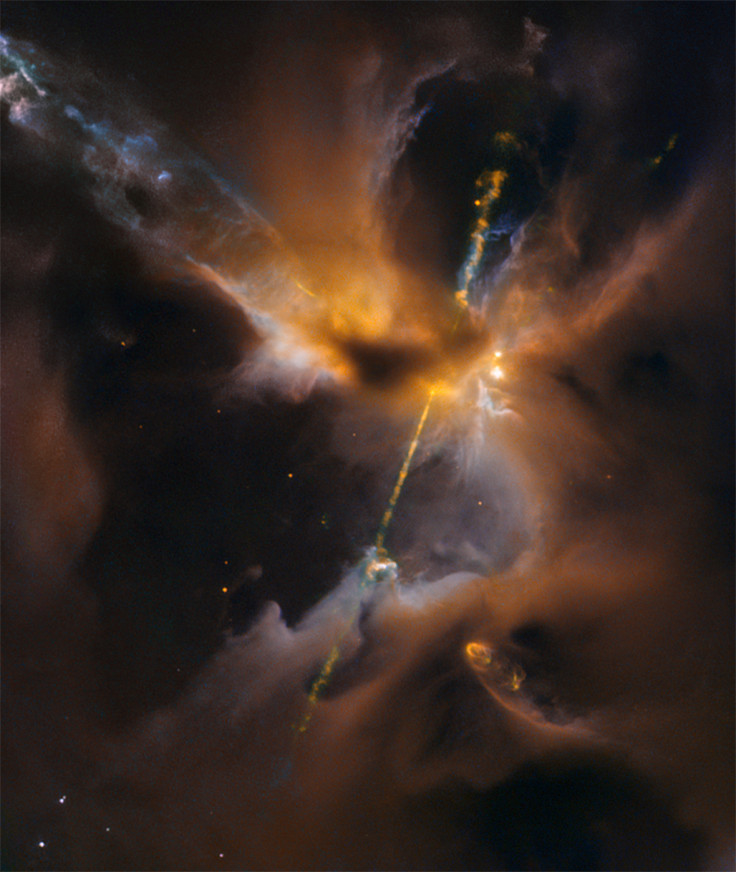Cosmic Star Wars celebration: Force Awakens within double-bladed lightsaber-wielding newborn star

It appears that even the universe is excited about the release of Star Wars: The Force Awakens. Nasa's Hubble Space Telescope captured an image of what looks like a celestial double-bladed lightsaber. Ironically, the phenomenon occurred right here in our home galaxy, The Milky Way, and not in some galaxy far, far, away. Nasa released the image just in time for the release of the new Star Wars movie on 17 December.
While photographing the Herbig-Haro object (HH 24), which is about 1,350 light years away from Earth, Hubble captured the image of two jets of gas expelling from the formation of a new star. Herbig Haro objects are patches of nebula activity where the gas ejected from new-born stars collides with other gas and dust particles in the cloud.
Nasa described the scene: "In the center of the image, partially obscured by a dark, Jedi-like cloak of dust, a newborn star shoots twin jets out into space as a sort of birth announcement to the universe."
Nasa's announcement outlined a brief explanation of the phenomenon, which said that at the birth of a new star, super-heated materials are shot outward in jets, through its axis. The axis can be considered as an escape route by which these superheated materials find a way out of molecular hydrogen clouds. Upon collision with external gas and dust, these jets clear vast spaces, not unlike "a stream of water plowing into a hill of sand". This is when shock fronts develop along the body of the jets - Herbig-Haro (HH) objects.
Speaking of the image captured by the Hubble, John Grunsfeld, astronaut and associate administrator for the Nasa Science Mission directorate, said: "Science fiction has been an inspiration to generations of scientists and engineers, and the film series Star Wars is no exception. There is no stronger case for the motivational power of real science than the discoveries that come from the Hubble Space Telescope as it unravels the mysteries of the universe."
© Copyright IBTimes 2025. All rights reserved.






















